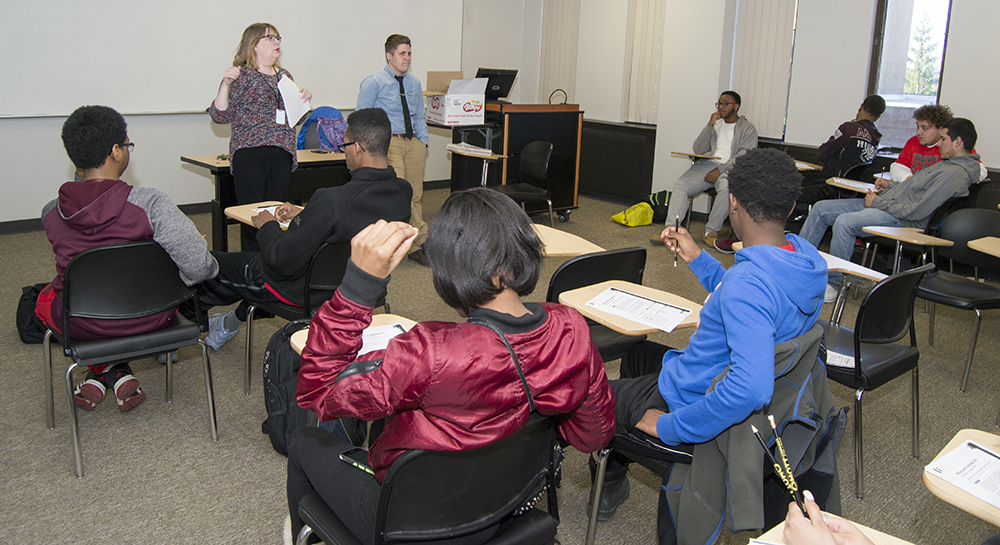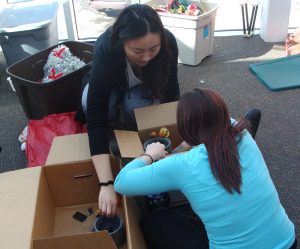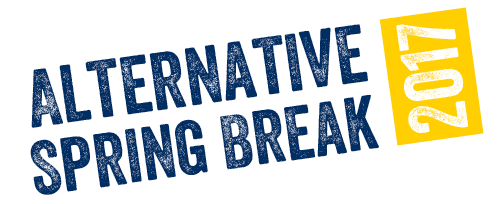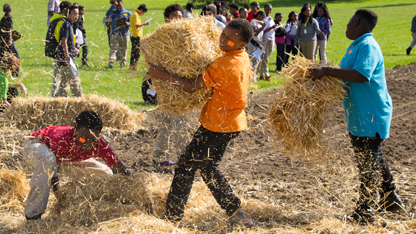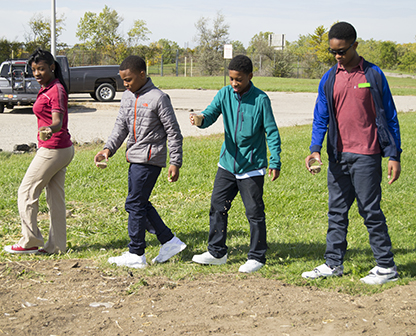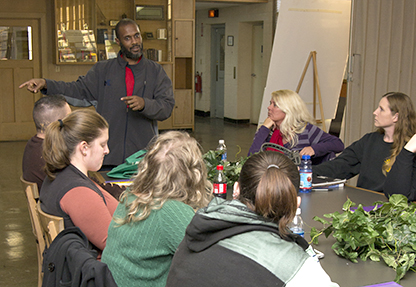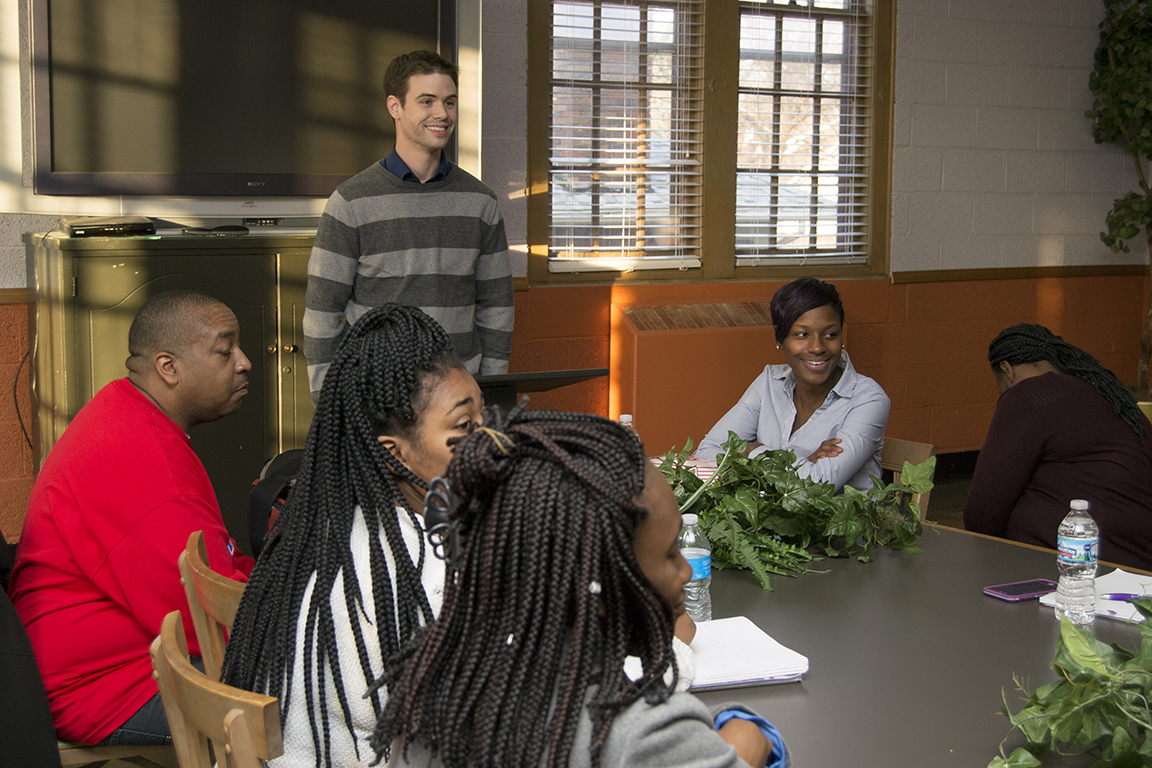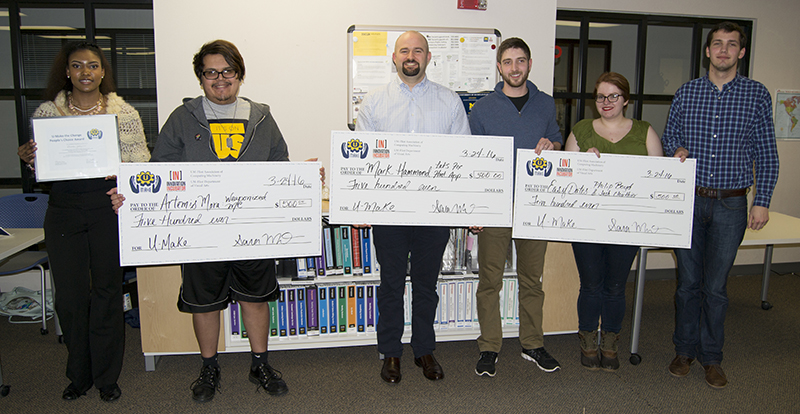By Sara McDonnell
“If you build it, they will come,” that was the line from the Field of Dreams movie that Kevin Costner starred in, those of us around in the 90’s will remember that movie. I remember there being all kinds of spoofs off that movie one-liner. I never thought much of it but the saying holds true when it comes to building habitat for wildlife. Many of our Flint parks provide habitat, and many just need the extra nudge to become something special.
 That’s what students at Flint’s Southwestern Academy learned last year while in Ms. Kim Hatfield’s and Ms. Linda Heck’s classes. Their school has these really cool internal courtyards that they’ve worked on to improve and create art, garden space, and habitat in. Some of nature’s friends, mostly ducks, have enjoyed living in one of the courtyards but it wasn’t providing enough food or shelter.
That’s what students at Flint’s Southwestern Academy learned last year while in Ms. Kim Hatfield’s and Ms. Linda Heck’s classes. Their school has these really cool internal courtyards that they’ve worked on to improve and create art, garden space, and habitat in. Some of nature’s friends, mostly ducks, have enjoyed living in one of the courtyards but it wasn’t providing enough food or shelter.
The students had begun asking questions, “What if there was a place at our school for wildlife to live? What types of things do ducks, birds, amphibians, need to thrive? What would that look like? Where is the best place to build something?” by getting out of the classroom, practicing place-based education, the students identified an ideal location in the park next to their school.
 All of Flint’s schools were planned as school-park sites, which basically means that every school has a park located next door. Cronin Derby Downs is the park next to Southwestern Academy, you know the one with the epic sledding hill? Part of that park is wet most of the year, the grass is usually soggy, making it hard to mow and looking kept up.
All of Flint’s schools were planned as school-park sites, which basically means that every school has a park located next door. Cronin Derby Downs is the park next to Southwestern Academy, you know the one with the epic sledding hill? Part of that park is wet most of the year, the grass is usually soggy, making it hard to mow and looking kept up.
Thanks to a mini-grant from University Outreach’s Discovering PLACE program, the teachers were able to work with Genesee Conservation District to design an outdoor habitat space at the park. A partnership was formalized between UM-Flint, Flint Community Schools, city of Flint, and the Genesee Conservation District to get the design work done. UM-Flint Outreach has been working with all the parties for many years thanks to funding from the Great Lakes Fisheries Trust.
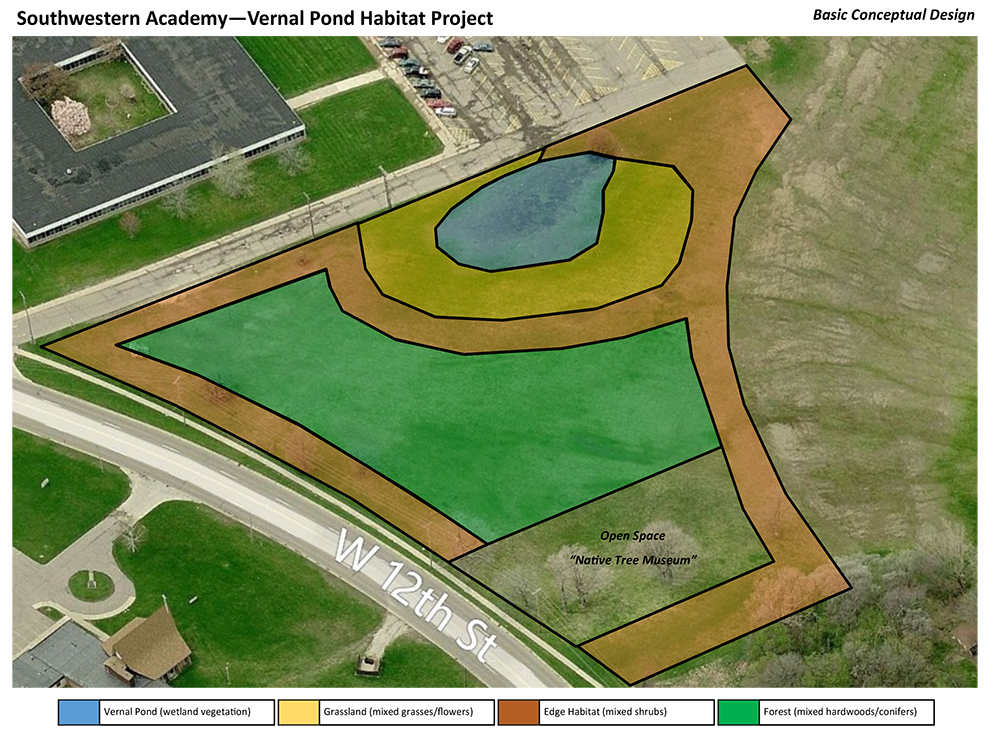 The students led a design process that had been approved by adults. Student voices informed development of the habitat project next to the school. The project that supports the Imagine Flint Master Plan, and its recommendations for blue/green infrastructure – naturalize part of the park to provide habitat for wildlife, and cut down maintenance costs. How cool is that!
The students led a design process that had been approved by adults. Student voices informed development of the habitat project next to the school. The project that supports the Imagine Flint Master Plan, and its recommendations for blue/green infrastructure – naturalize part of the park to provide habitat for wildlife, and cut down maintenance costs. How cool is that!
With no time to rest on their laurels, the students and teachers, working with UM-Flint Outreach and the Conservation District, started digging up the grass in preparation of restoring a vernal pool and planting of native vegetation. It was hard work, and there wasn’t a way the students could get it done in time. The students put their thinking caps back on and again started asking “how much does it cost to restore habitat?” The cost estimates came in and it was going to cost about $19,000 to have the professionals come in, and buy all the materials they needed.
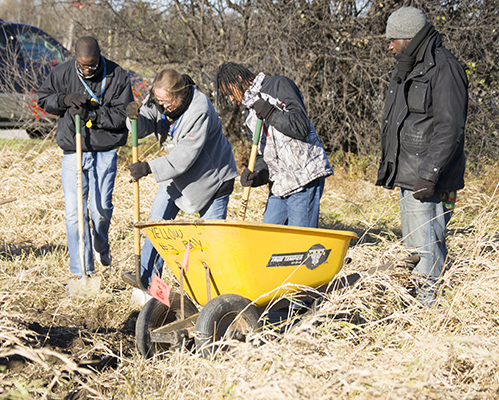 That’s when, University Outreach, with its long standing relationship with Saginaw Bay Watershed Initiative Network (WIN), put together a grant proposal to cover the costs of building the habitat. It was awarded! Saginaw Bay WIN is a group of funders, based out of Midland and Bay City that supports projects that protect and restore the Saginaw Bay Watershed.
That’s when, University Outreach, with its long standing relationship with Saginaw Bay Watershed Initiative Network (WIN), put together a grant proposal to cover the costs of building the habitat. It was awarded! Saginaw Bay WIN is a group of funders, based out of Midland and Bay City that supports projects that protect and restore the Saginaw Bay Watershed.
Work is going to start this fall, Genesee Conservation District is leading the construction, while a retired school teacher, Ms. Linda Heck, will work with individual classrooms to design lesson plans, so students can learn science, math, and English language arts outside the school, next door in the habitat that their older classmates designed. That is the coolest part of all. The students dreamed and designed a place for local wildlife to thrive. And believe me, they are thriving!

The Discovering Place program works with Suzanne Knight and Laura McLeman, co-coordinators of the Secondary Teacher Certification Programs, Professional Education Unit at UM-Flint, to align secondary education teaching practices with place-based education. Please contact Leyla Sanker to learn how you can connect with this work at [email protected] or (810) 424-5477.
Additional Reading
Getting Students Interested in Natural Resources Sciences
Flint initiative redefines place-based education in urban schools
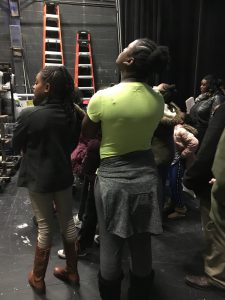 University Outreach has been supporting partnership opportunities between UM-Flint and the Community Education Initiative in Flint Community Schools since 2014. One great partnership that is growing this year is between UM-Flint’s Student Dance Organization and Flint’s Pierce Elementary School. On November 30, 2017, seventeen students from Flint’s Pierce Elementary School visited UM-Flint to watch the Student Dance Organization’s Choreographic Showcase. The third through sixth graders were all amazed by the lobby of the Theater and were excited for what was in store for them that evening.
University Outreach has been supporting partnership opportunities between UM-Flint and the Community Education Initiative in Flint Community Schools since 2014. One great partnership that is growing this year is between UM-Flint’s Student Dance Organization and Flint’s Pierce Elementary School. On November 30, 2017, seventeen students from Flint’s Pierce Elementary School visited UM-Flint to watch the Student Dance Organization’s Choreographic Showcase. The third through sixth graders were all amazed by the lobby of the Theater and were excited for what was in store for them that evening.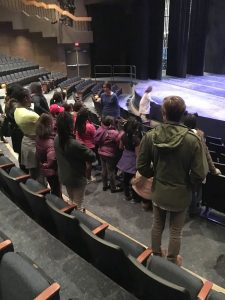 Their visit began with a tour of the Department of Theatre and Dance led by Shelby Newport, Chair, Associate Professor, and Resident Costume Designer of the Theater Department. Pierce students were able to tour backstage, the scene shop, costume shop, black box and walk on stage where the performance would later take place. The Pierce students were very excited about getting a sneak peek of what happens behind stage before a show is put together. They were even given the opportunity to try on some costume pieces from a recent performance.
Their visit began with a tour of the Department of Theatre and Dance led by Shelby Newport, Chair, Associate Professor, and Resident Costume Designer of the Theater Department. Pierce students were able to tour backstage, the scene shop, costume shop, black box and walk on stage where the performance would later take place. The Pierce students were very excited about getting a sneak peek of what happens behind stage before a show is put together. They were even given the opportunity to try on some costume pieces from a recent performance.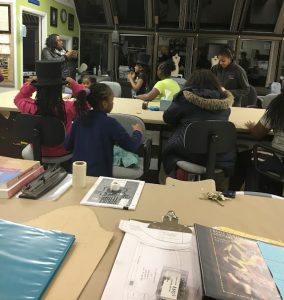 After the behind-the-scenes tour, Pierce students watched the Choreographic Showcase and could be seen dancing along in their seats the entire show. When the performance was over, the students from Pierce had the opportunity to meet some of the dancers and expressed how much they wanted to dance like them. This field trip was the beginning of a partnership between UM-Flint’s Student Dance Organization and the Flint Community Education Initiative at Pierce Elementary which will support the Student Dance Organization in leading an after school dance program at the school beginning in January 2018. UM-Flint’s Student Dance Organization will be teaching various styles of dance for a 5-10 week period to K-6 students.
After the behind-the-scenes tour, Pierce students watched the Choreographic Showcase and could be seen dancing along in their seats the entire show. When the performance was over, the students from Pierce had the opportunity to meet some of the dancers and expressed how much they wanted to dance like them. This field trip was the beginning of a partnership between UM-Flint’s Student Dance Organization and the Flint Community Education Initiative at Pierce Elementary which will support the Student Dance Organization in leading an after school dance program at the school beginning in January 2018. UM-Flint’s Student Dance Organization will be teaching various styles of dance for a 5-10 week period to K-6 students.